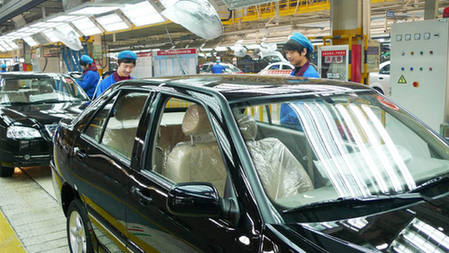| Wanjiang City Belt in the Making
By staff reporter TANG SHUBIAO
IN February 2011 while on a business trip to Wuhu in Anhui Province, I took a taxi to visit my aunt there. I asked the driver if he had noticed any change to the city since the start of the Wanjiang City Belt project. "Yes, of course," he answered eagerly. "More outsiders are coming in, and fewer locals are leaving." When I got out, he added, "The taxi fare got cheaper too. Only six yuan now!"
When I told my 80-year-old aunt what the driver had said, she insisted on showing me around the outside of where she lived, pointing out a park on one side of her house, another on the other side, and a school and a hospital in front. Life was very convenient, she assured me, and next year the inter-city railway from Nanjing in Jiangsu to Anqing in Anhui would go into operation. "It will take only half an hour from here to Nanjing," she beamed, clearly relishing the idea of meeting with her Nanjing relatives.
 |
|
The two millionth Chery rolling off the production line in 2010. Tang Shubiao |
Wanjiang: A New Name
Wuhu is a city in Anhui and a member of Wanjiang City Belt.
Wanjiang is not an official place name. You won't find it on any map. In ancient times Anhui had a Wan Mountain, a Wan River, and a Wan State; these days Wan is the simplified name of Anhui, and locals refer to the 400-km section of the Yangtze River within the province as the Wanjiang, or Wan River. Wanjiang City Belt comprises nine cities along its banks: Hefei, Ma'anshan, Chaohu, Wuhu, Tongling, Chizhou, Chuzhou, Xuancheng and Anqing.
In January 2010 the central government decided to establish Wanjiang City Belt as an industry transfer demonstration project. It is part of the national economic and industrial restructuring endeavor.
In the 1980s Deng Xiaoping proposed a two-step development strategy: coastal areas should take the lead in opening to the outside world and get rich ahead of interior areas; having built up considerable strength, they should then help the hinterland and serve as engines for its economic development.
Following the setting up of special economic zones in 1979, China went on to open 14 coastal cities in 1984 and the Yangtze, Pearl and Minnan deltas in 1985 to foreign investors. In 1988 the State Council made Hainan Island another special economic zone and in 1990 decided to develop Shanghai's Pudong. As a result, eastern China prospered. Over the following decade, the central government launched the Western Development Drive, Northeast Old Industry Rejuvenation and Central China Resurrection campaigns to balance regional development and strive for coordinated national progress.
Over the past three decades, production costs have kept rising in the eastern areas, whittling away the development advantages of their traditional industries. The global financial crisis has exacerbated the situation, forcing the eastern areas to accelerate economic restructuring and industry transfer. In contrast, the western and central areas have seen a decade of significant infrastructure improvement, and their production costs are clearly lower than in eastern China. There exists vast space and potential for industrial transfer and growth. Therefore, it has become a strategic expedient to shift certain industries from the eastern littoral to the western and central areas so as to achieve a more rational and efficient economic pattern based on regional division and cooperation. Wanjiang City Belt is a demonstration project for the settling of transferred industries into new homes.
| 